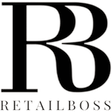Kate Spade and Kate Spade Outlet are two distinct retail concepts under the Kate Spade & Company brand, a globally recognized name in luxury accessories and handbags. While Kate Spade is synonymous with high-quality, fashion-forward designs, Kate Spade Outlet offers more affordable options, making luxury accessible to a broader audience. As of 2025, Kate Spade operates over 400 retail stores globally, while Kate Spade Outlet has expanded to 50+ locations in the U.S. Let’s into their differences, target markets, product offerings, pricing, and recent developments.
Foundational Differences
| Criteria |
Kate Spade |
Kate Spade Outlet |
| Established |
1993 |
Early 2000s (as part of Kate Spade & Co.) |
| Parent Company |
Tapestry, Inc. |
Tapestry, Inc. |
| Number of Stores |
400+ (as of 2025) Source |
50+ (as of 2025) Source |
| Global Presence |
Yes (North America, Europe, Asia) |
Primarily U.S. (outlet malls) |
| Target Market |
Fashion-forward, middle to high-income |
Value-conscious shoppers |
| Price Point |
High-end |
Affordable |
| Product Focus |
Luxury accessories, handbags, apparel |
Budget-friendly, simplified designs |
Target Consumers
- Kate Spade: Targets young females aged 20-40, including millennials and Gen Z, who value trendy, fashion-forward designs and are willing to pay a premium for quality and exclusivity. In 2025, Kate Spade reported a 12% increase in sales among millennials, driven by its focus on bold colors and quirky prints.
- Kate Spade Outlet: Appeals to a similar demographic but focuses on affordability, making luxury accessible to a broader audience. In 2025, Kate Spade Outlet saw a 20% growth in sales, attributed to its budget-friendly promotions and special offers.
| Aspect |
Kate Spade |
Kate Spade Outlet |
| Core Age Range |
20-40 |
20-40 (with a focus on affordability) |
| Income Level |
Middle to high-income |
Broader audience, including budget-conscious shoppers |
| Marketing Strategy |
Influencer marketing, bold designs |
Value propositions, budget-friendly promotions |
Product Differences
- Kate Spade: Offers luxury accessories, handbags, and apparel featuring intricate designs and high-quality materials. In 2025, Kate Spade launched a sustainable collection, with 30% of its products now made from eco-friendly materials.
- Kate Spade Outlet: Features simpler designs and budget-friendly materials, often exclusive to outlet stores. In 2025, Kate Spade Outlet introduced a vegan leather line, furthering its appeal to eco-conscious shoppers.
| Category |
Kate Spade |
Kate Spade Outlet |
| Key Products |
Handbags, accessories, apparel |
Simplified designs, budget-friendly items |
| Material Quality |
High-quality, luxurious materials |
Good quality, but less intricate |
| Sustainability |
30% eco-friendly materials |
Vegan leather collection |
Pricing and Materials
- Kate Spade: Known for its higher price points, handbags typically range from $150 to 400+. The brand uses luxurious materials and intricate craftsmanship, justifying the premium pricing.
- Kate Spade Outlet: Offers products at 30-50% lower prices than retail, using simpler designs and less expensive materials to maintain affordability.
| Aspect |
Kate Spade |
Kate Spade Outlet |
| Price Range |
$150−400+ |
30-50% lower than retail |
| Material Quality |
Luxurious, high-quality |
Good quality, but less intricate |
| Design Complexity |
Intricate, detailed designs |
Simplified, mass-appeal designs |
- Kate Spade: Provides an exclusive, upscale shopping experience in boutique settings, often featuring bold colors and quirky prints. In 2025, Kate Spade introduced virtual styling consultations, enhancing its digital shopping experience.
- Kate Spade Outlet: Offers a more budget-friendly and approachable shopping environment, often located in outlet malls. In 2025, Kate Spade Outlet expanded its online presence, with 25% of its sales now coming from e-commerce.
| Aspect |
Kate Spade |
Kate Spade Outlet |
| In-Store Experience |
Upscale, boutique-style |
Budget-friendly, approachable |
| Online Presence |
Virtual styling, exclusive collections |
Growing e-commerce, special offers |
Customer Demographics
- Kate Spade: Appeals to young adults aged 18-34, particularly millennials and Gen Z, who value luxury and exclusivity. In 2025, Kate Spade’s brand loyalty remained strong, with a 90% customer satisfaction rate.
- Kate Spade Outlet: Targets a similar demographic but focuses on affordability, making it accessible to a broader audience. In 2025, Kate Spade Outlet’s customer base grew by 15%, driven by its value proposition.
| Aspect |
Kate Spade |
Kate Spade Outlet |
| Target Age Group |
18-34 |
18-34 (with a focus on affordability) |
| Brand Loyalty |
Strong among millennials and Gen Z |
Growing among value-conscious shoppers |
| Customer Insights |
High-quality, luxurious perception |
Good value for the price |
Recent Developments
- Kate Spade: In 2025, Kate Spade expanded its sustainable product lines, with plans to make 50% of its materials eco-friendly by 2030. The brand also opened 50 new stores in Asia and Europe, strengthening its global presence,
- Kate Spade Outlet: In 2025, Kate Spade Outlet opened 10 new outlet stores in the U.S., bringing its total store count to 50+. The brand also introduced carbon-neutral shipping and expanded its vegan leather collection.
Conclusion
Kate Spade and Kate Spade Outlet cater to different yet overlapping market segments. Kate Spade appeals to consumers seeking luxury, high-quality designs, while Kate Spade Outlet attracts value-conscious shoppers with affordable, stylish options. Both brands have embraced sustainability and digital transformation, positioning themselves for continued growth in a competitive retail landscape.

















